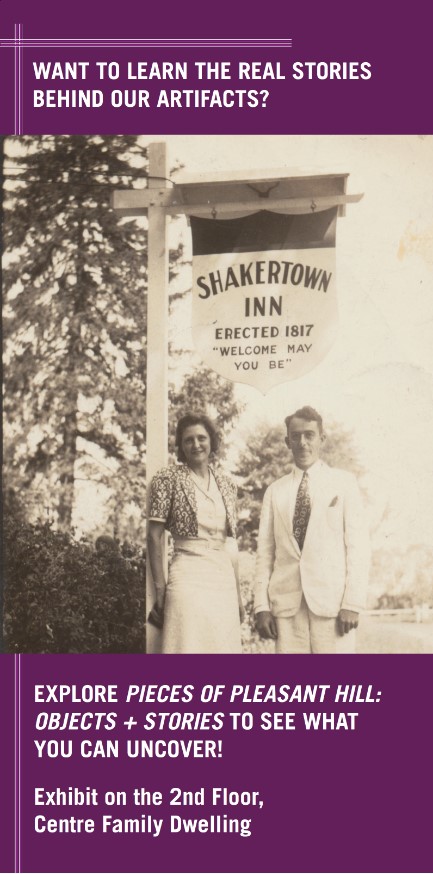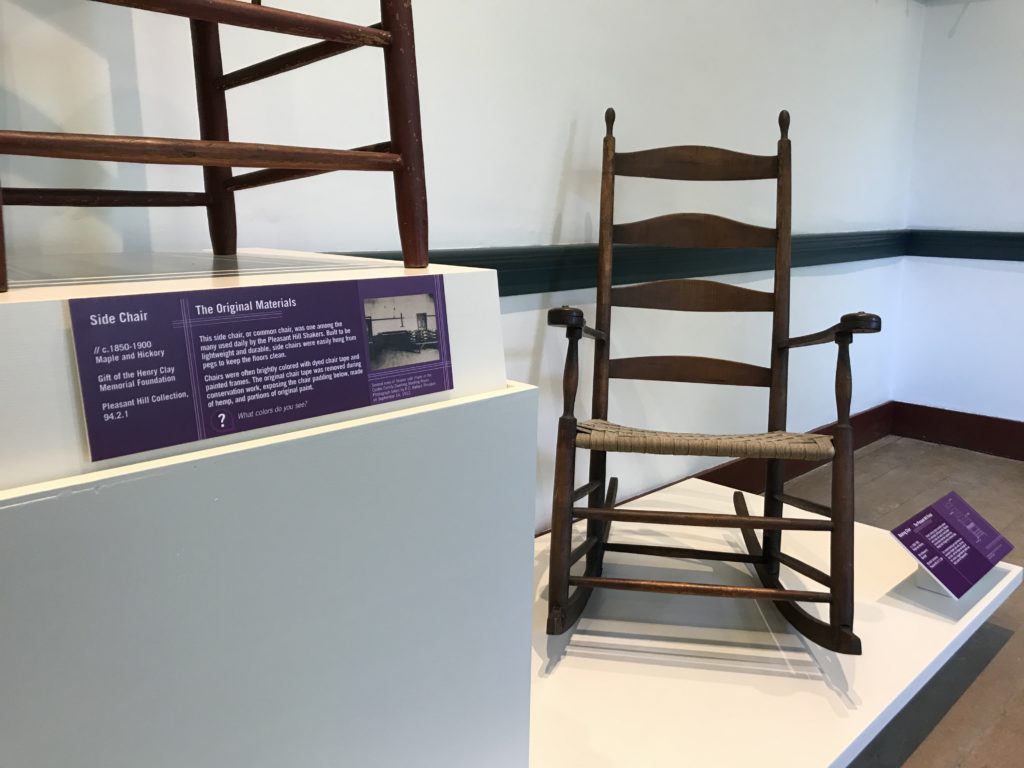By Maggie McAdams, Education and Engagement Manager
Do you have a favorite Shaker artifact? When you think of Pleasant Hill, do any special objects come to mind? If you could pick one word to describe Pleasant Hill or the Shakers, what word would that be?

Trying to pick one word or one artifact can be challenging, but it is a fun exercise because it can help to clarify what the Shakers mean to you personally. Every artifact offers visitors an opportunity to connect with the Pleasant Hill story, and our latest exhibit, Pieces of Pleasant Hill: Objects + Stories, helps to establish these relevant connections.
Pieces of Pleasant Hill: Objects + Stories highlights Shaker Village’s artifact and archival collection, and encourages visitors to think critically about what, and why, we collect. Featuring over 20 artifacts, this exhibit will help visitors piece together the Pleasant Hill story by not only exploring the objects left behind, but by considering why they matter. The Shakers called Pleasant Hill home for over a century, and their diverse individual experiences left us with a collection that is equally varied and diverse.
Shaker Village of Pleasant Hill was founded in 1961 to “collect, preserve, and display the records, artifacts, tools, and products of the Shaker community.” Today, Shaker Village actively maintains 34 historic structures, 25 miles of rock walls, 3,000 acres of original Shaker land, and over 7,000 objects and documents! The Pleasant Hill Shakers have a fascinating story to tell, but how do we, as a museum, tell that story?
Shaker material culture, particularly Shaker furniture, is often the point of entry into the Shaker story for many visitors. Pieces of Shaker furniture were the first artifacts to be collected and studied by early 20th century Shaker scholars. Furniture was so heavily studied and written about that it became the focal point for discussions on the Shakers for much of the 20th century, much to the chagrin of Shaker Mildred Barker, who famously stated, “I almost expect to be remembered as a chair.”

While furniture and furniture making were important components of the Shaker experience, there is so much more to the story. This new exhibit features Shaker furniture along with additional artifacts from the collection to emphasize the importance of analyzing objects to understand their significance to the history of the community. By digging deeper into these artifacts, and uncovering the personal stories behind them, we can explore the dynamic nature of this community.
The exhibit will lead visitors through a series of questions that address the artifacts themselves and the scope of the collection as a whole. Guests will also be encouraged to get involved in the research process to uncover the individuals and stories behind our artifacts. In doing so, we hope that visitors will understand not only how the artifacts fit into the larger Pleasant Hill story, but also how these stories help build meaningful connections with their own lives.
Every artifact has a story to tell, you just have to know what questions to ask.

Join us as we examine the importance of artifacts, and the ways in which we can use them to understand more about life in this community!
This project is supported with funding from the Kentucky Local History Trust Fund (KRS 171.325), a program administered by the Kentucky Historical Society. For more information, see history.ky.gov/local-history-fund